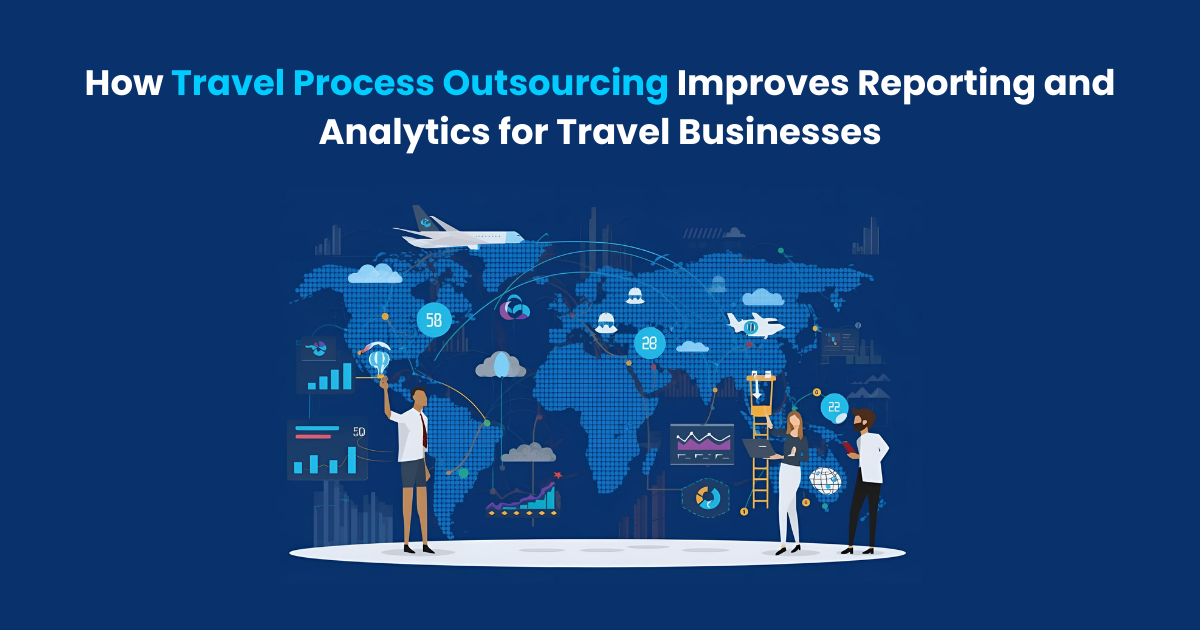
The healthcare industry isn’t just transforming—it’s being revolutionized. Behind the walls of hospitals, inside your smartwatch, and embedded within digital health platforms is a force quietly reshaping how care is delivered: artificial intelligence.
Once a futuristic concept, AI is now central to the evolution of healthcare software. And this isn’t just about automation or flashy tech jargon. It’s about tangible, life-altering outcomes—diagnoses delivered faster, administrative burdens reduced, and patients receiving the right care at the right time.
Let’s pull back the curtain on how AI is changing the pulse of healthcare software development.
The Shift: From Reactive to Proactive Healthcare
Traditionally, healthcare systems operated reactively—diagnose and treat. But AI is flipping that script.
Today, predictive analytics allows software to flag risks before symptoms emerge. AI models ingest patient data from wearables, EHRs, and even genetic profiles to identify early warning signs of conditions like diabetes, heart disease, or mental health disorders. Instead of waiting for a crisis, healthcare providers can intervene earlier, often preventing complications altogether.
This proactive model is not a distant dream—it’s already happening. Mount Sinai’s Icahn School of Medicine, for instance, uses deep learning models that predict severe sepsis with high accuracy hours before clinical recognition. That’s the power of shifting from code to care—where lines of AI-driven code directly translate into saved lives.
Diagnostic Accuracy: Human Intelligence, Supercharged
Let’s be honest—diagnosis is often a race against time. In the chaos of busy clinics, even seasoned professionals can miss subtle cues. AI isn’t here to replace doctors; it’s here to empower them.
Consider medical imaging. Algorithms trained on millions of scans can spot minute abnormalities—a lung nodule or retinal bleed—that might escape the human eye. Studies show that AI-assisted radiology software can match, and in some cases surpass, human accuracy in detecting diseases like cancer, TB, and fractures.
But the real beauty? AI augments human expertise. The physician gets a second set of “eyes”—a tireless, unbiased one that never misses a detail. This collaborative model is making diagnosis faster, more reliable, and less error-prone.
Intelligent EHRs: From Clunky to Clever
Electronic Health Records (EHRs) were supposed to make healthcare smarter. But for many practitioners, they’ve become a digital burden. Cumbersome interfaces, redundant data entry, and fragmented records have plagued EHR adoption globally.
AI is cleaning up the mess.
Natural Language Processing (NLP) is being used to transcribe doctor-patient conversations in real-time, automatically populating EHR fields. AI-driven systems can summarize lengthy patient histories into concise, context-aware insights. No more digging through years of records to find a crucial allergy note.
Then there’s interoperability. AI models are facilitating seamless data exchange across providers, even when their software ecosystems differ. That means a patient’s health history becomes truly portable—accessible, consistent, and actionable wherever they go.
Virtual Health Assistants and Chatbots: The New Frontline
Healthcare doesn’t always need a hospital. Sometimes, it just needs the right information at the right time.
AI-powered virtual assistants and chatbots are bridging this gap. They handle appointment bookings, medication reminders, symptom checks, and even post-discharge follow-ups. These aren’t your average automated voice systems. They’re intelligent, conversational, and context-aware.
Take Florence, a popular health chatbot that reminds users to take medication, monitors side effects, and even offers information on diseases and conditions—all through a simple chat interface. For patients with chronic conditions or those in rural areas, this digital companionship can be life-changing.
They don’t replace human care—they extend it.
Administrative Automation: Killing the Paper Tiger
Behind every patient consultation is a mountain of administrative work: billing, claims, compliance, coding, documentation. This paperwork tsunami eats up resources and drains staff morale.
AI is now the secret weapon against this bureaucracy.
With robotic process automation (RPA) and intelligent document processing, routine admin tasks are being handled in minutes. Claims processing? Automated. Insurance verification? Instant. Compliance audits? Pre-flagged anomalies, thanks to machine learning.
By reducing manual workload, healthcare workers can reclaim their time—and refocus it on what truly matters: the patient.
Personalized Treatment Plans: Medicine Meets Precision
Generic treatments are giving way to precision medicine, where therapies are tailored to an individual’s genetic, environmental, and lifestyle factors. AI plays a pivotal role in making this real.
Platforms like IBM Watson for Oncology use AI to recommend personalized treatment plans by analyzing thousands of clinical studies, patient records, and genetic data points. This isn’t just faster—it’s smarter.
Imagine two patients with the same type of cancer. Instead of a one-size-fits-all approach, AI helps identify what treatments will likely be most effective for each based on their unique profile. That’s not just care—it’s custom-crafted healing.
AI in Surgery: Steady Hands, Smarter Minds
When AI enters the operating room, it doesn’t wield a scalpel—it sharpens decision-making.
Robotic-assisted surgeries, like those performed with the da Vinci Surgical System, are becoming more common. AI enhances these systems with real-time data analysis, precision guidance, and predictive modeling.
But there’s more: pre-surgical planning is being revolutionized by AI-powered simulations. Surgeons can rehearse complex procedures virtually, using patient-specific data. During surgery, AI analyzes vitals and guides decisions, minimizing risks.
This isn’t science fiction—it’s happening in top-tier hospitals today, blending machine accuracy with human skill in one of the most delicate arenas.
Drug Discovery and Clinical Trials: Speeding Up the Pipeline
Drug discovery traditionally takes years—often over a decade. It’s expensive, risky, and frequently ends in failure. AI is now shortening that timeline.
Machine learning models can analyze massive datasets to identify potential drug compounds, predict their behavior, and even simulate trial outcomes. Algorithms help in repurposing existing drugs for new diseases, like how AI identified baricitinib, a rheumatoid arthritis drug, as a potential COVID-19 treatment early in the pandemic.
AI also plays a role in recruiting patients for clinical trials. By scanning medical records and matching eligibility criteria, AI eliminates guesswork and accelerates enrollment. This leads to faster trials, quicker approvals, and earlier access for patients in need.
Remote Monitoring and Predictive Care: Healthcare Without Walls
Wearables and IoT medical devices are sending streams of health data in real-time. But data alone is noise—AI turns it into signals.
Smart healthcare platforms powered by AI can track patient vitals, detect anomalies, and send alerts before conditions escalate. For instance, heart rate variability patterns analyzed by AI can predict atrial fibrillation days in advance.
Elderly care, chronic disease management, post-operative recovery—all benefit from this continuous, intelligent monitoring. Patients stay safer at home. Providers stay informed. And everyone wins.
Ethical and Regulatory Considerations: Caution in the Code
Of course, AI in healthcare isn’t without its challenges.
Data privacy is paramount. With sensitive health information flowing through AI systems, safeguarding patient rights is non-negotiable. Regulations like HIPAA in the U.S. and GDPR in Europe mandate strict data governance—something every healthcare software developer must bake into their systems from day one.
There’s also the question of algorithmic bias. AI systems trained on unrepresentative datasets can perpetuate health disparities. Vigilance is needed in model training, validation, and real-world monitoring to ensure fairness and equity.
And transparency? It matters. Doctors need to trust the systems they use. Patients need to understand how decisions are made. Black-box models may be effective, but explainability is key to building credibility in clinical settings.
The Developer’s Dilemma: Building Software That Can Save Lives
Here’s where it gets real for tech teams: developing healthcare software isn’t like building an e-commerce app or a travel site. The stakes are different. You’re not just pushing code; you’re potentially influencing life and death decisions.
That’s why domain knowledge, rigorous testing, compliance adherence, and interdisciplinary collaboration are essential.
Healthcare software must meet international standards like ISO 13485 for medical devices or IEC 62304 for medical software lifecycle processes. That’s before you even get to FDA or CE certifications. Development is slower, yes—but that’s because the margin for error is zero.
Smart developers recognize that AI is a tool—powerful, but only as good as the humans who wield it.
What the Future Holds: AI as a Healthcare Colleague
So what’s next?
We’re heading toward a world where AI becomes a collaborative member of the healthcare team. It will monitor patients between visits, handle routine diagnostics, flag early warnings, and even coach patients toward better behaviors.
But it won’t replace human caregivers. Rather, it will allow them to do what machines can’t: offer empathy, contextual judgment, and the human connection that defines true care.
AI is the assistant, the analyst, the second opinion—but never the doctor.
Conclusion: Turning Innovation into Impact
The promise of AI in healthcare software isn’t just about better code—it’s about better care. It’s about making medicine smarter, more personalized, and more accessible to everyone, everywhere.
As we look forward, the challenge is clear: build solutions that are technically sound, ethically grounded, and clinically valuable. For those in the business of healthcare software, the call is louder than ever. Patients aren’t just users—they’re people. And people deserve more than a product. They deserve outcomes.
If your organization is looking to bring this future closer, it starts with choosing the right partner. One who understands that at the heart of every digital innovation in healthcare is a very human need. That’s where custom healthcare software development services make all the difference.
From code to care—it’s not just a slogan. It’s a responsibility. And it’s already reshaping the future of health.




